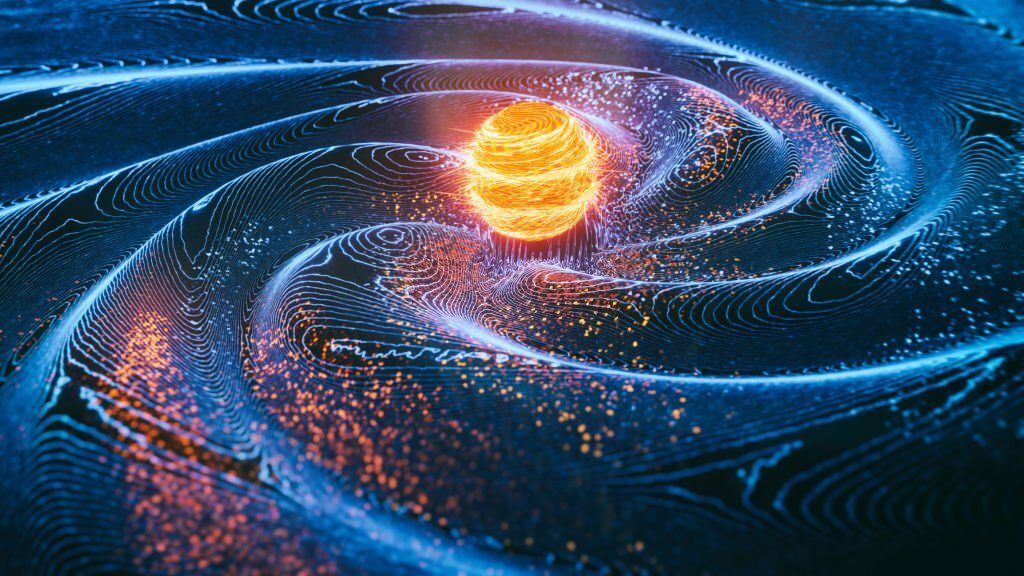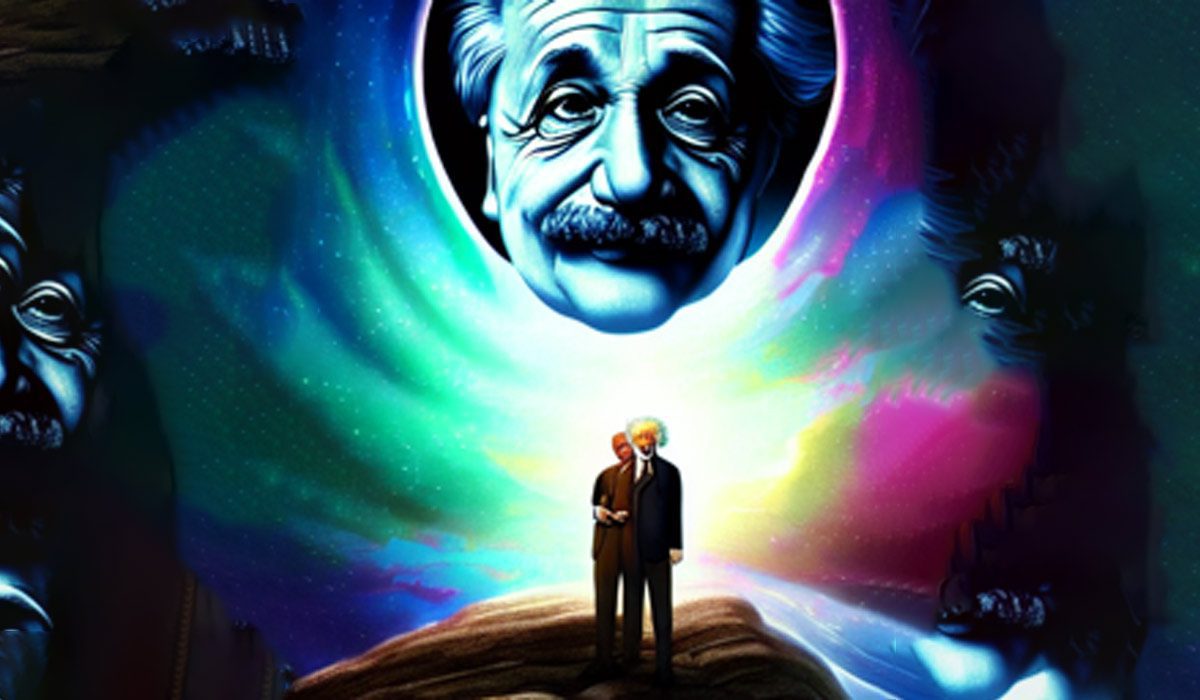Researchers have used Google’s Sycamore quantum computer to simulate a simplified wormhole for the first time and sent a piece of quantum information through it.
For the first time, scientists have created a quantum computing experiment for studying the dynamics of wormholes — that is, a shortcut through spacetime that could get around relativity’s cosmic speed limits of the speed to light.
The wormhole has mostly been a tool in science fiction. Most space travels that we think of is limited by the speed of light. If one has to traverse to the nearest galaxy Canis Major Dwarf, it would take more than 25,000 light years, even if one travels near the speed of light.
Currently the fastest spacecraft — Parker Solar Probe can only travel at as fast as 690,000 km/h (430,000 mph), or 0.064% the speed of light. The wormhole thus provides a portal, in crude terms to provide a possibility of distant space travel at least in theory.
The “baby” wormhole, created on Google’s Sycamore 2 quantum computer was not formed with gravity, but through quantum entanglement — the linking of two particles such that measuring one instantaneously affects the other.
By entangling qubits, or quantum bits, in minuscule superconducting circuits physicists were able to create a portal through which information was sent.
Hypothesis that our universe is a hologram
The experiment has the potential to further the hypothesis that our universe is a hologram stitched together by quantum information. The researchers published their findings on Nov. 30 in the journal Nature.
The holographic principle is the idea that the universe around us, which we are used to thinking of as being three dimensional, is actually at a more fundamental level two dimensional and that everything we see that’s going on around us in three dimensions is actually happening in a two-dimensional space.

“This is a baby step for interrogating quantum gravity in the lab,” lead author Maria Spiropulu(opens in new tab), a physicist at the California Institute of Technology, said at a Nov. 30 news conference. “When we saw the data, I had a panic attack. We were jumping up and down. But I’m trying to keep it grounded.”
Wormholes are hypothetical tunnels through space-time connected by black holes at either end. In nature, the immense gravity of the two black holes is what helps create the conditions of the wormhole, but the wormhole simulated in the experiment is a little different — It is a toy model that relies on a process called quantum teleportation to imitate two black holes and send the information through the portal.
These processes appear to be pretty distinct, but according to the researchers, they may not be that different after all.
In a hypothesis called the holographic principle, the theory of gravity that breaks down around black hole singularities Einstein’s General Relativity — could actually emerge from the weird rules governing very small objects like qubits — and their experiment might provide the first clues that this is the case.
However, the black hole analogs in the quantum computer are not the same as the all-consuming anomalies creeping in space.
But the researchers are unsure whether they might have simulated the black holes closely enough for them to be considered strange variants of the real thing, ultimately dubbing their quantum computer rifts “emergent” black holes.
“It looks like a duck; it walks like a duck; it quacks like a duck. That’s what we can say at this point,” co-author Joseph Lykken, a physicist and the deputy director of research at Fermilab, said at the news conference. “We have something that, in terms of the properties we look at, it looks like a wormhole.”
Columbia theoretical physicist Peter Woit warned against making too much of a to-do over the research.
“The claim that ‘Physicists Create a Wormhole’ is just complete bullshit, with the huge campaign to mislead the public about this a disgrace, highly unhelpful for the credibility of physics research in particular and science in general,” he wrote on his blog, which he called ‘Not Even Wrong.’
Einstein and Rosen predictions
The idea of wormholes first appeared from the work of Albert Einstein and his colleague Nathan Rosen, who, in 1935, demonstrated in a famous paper that the theory of general relativity permitted black holes to be linked in bridges that could connect vast distances.
The theory was an attempt to offer an alternative reason to points in space called singularities –The cores of black holes where mass has become infinitely concentrated at a single point, creating a gravitational field so powerful that space-time is warped to infinity and Einstein’s equations collapse.
If wormholes existed somehow, Einstein and Rosen reasoned, then general relativity held up.
A month before the famous 1935 paper, Einstein, Rosen, and their colleague Boris Podolsky had written another. In that research, they made a prediction that, unlike their later paper in general relativity, wasn’t intended to bolster quantum theory but to discredit it for its ridiculous implications.
If the rules of quantum mechanics were true, the physicists outlined, the properties of two particles could become inextricably linked such that measuring one would instantaneously affect the other, even if the two were separated by an enormous gap.
Einstein scoffed at the process, known now as quantum entanglement, dubbing it “spooky action at a distance,” but it has since been observed and is commonly used by physicists.
Despite having produced these two groundbreaking predictions, Einstein’s dislike for the inherent uncertainty and weirdness of quantum physics could have blinded him to a vital insight: that the two predictions could be, in fact, connected. By separating general relativity and quantum theory, physicists have been left with no understanding of the realms where gravity and quantum
effects collide — such as the interiors of black holes or the infinitesimal point into which the universe was concentrated at the moment of the Big Bang.
Holographic principle
Since Einstein reached this impasse, the search for where the big and small stitch together — a theory of everything — has led physicists to come up with all kinds of colorful propositions.
One is the holographic principle, which posits that the entire universe is a 3D holographic projection of processes playing out on a remote 2D surface.
This idea finds its roots in Stephen Hawking’s work in the 1970s, which posed the apparent paradox that if black holes did indeed radiate Hawking radiation (radiation from virtual particles randomly popping into existence near event horizons) they would eventually evaporate, breaking a major rule of quantum mechanics that information cannot be destroyed.
General relativity and quantum mechanics now no longer just appeared irreconcilable — despite their many remarkably accurate predictions, they could even be wrong.
To solve this problem, supporters of string theory, who sought to reconcile quantum mechanics and relativity, used observations that the information contained by a black hole was linked with the 2D surface area of its event horizon (the point beyond which not even light can escape its gravitational pull).
Even the information about the star that collapsed into the black hole was woven into fluctuations on this horizon surface, before being encoded onto Hawking radiation and sent away prior to the black hole’s evaporation.
In the 1990s, theoretical physicists Leonard Susskind and Gerard ‘t Hooft realized the idea needn’t stop there. If all the information of a 3D star could be represented on a 2D event horizon, perhaps the universe — which has its own expanding horizon — was the same: A 3D projection of 2D information.
From this perspective, the two disjointed theories of general relativity and quantum mechanics might not be separate at all. Space-time’s gravitational warping, along with everything else we see, could instead emerge like a holographic projection, shimmering into being from the minute interactions of tiny particles on the lower-dimensional surface of a remote horizon.
Testing for wormholes
To put these ideas to the test, the researchers turned to Google’s Sycamore 2 computer, loading it with a bare-bones model of a simple holographic universe that contained two quantum-entangled black holes on either end.
After encoding an input message into the first qubit, the researchers saw the message get scrambled into gibberish — a parallel to being swallowed by the first black hole — before popping out unscrambled and intact at the other end, as if it were spat out by the second.
“The physics that’s going on here, in principle, is if we had two quantum computers that were on different sides of the Earth, and if we improve this technology a little bit, you could do a very similar experiment where the quantum information disappeared in our laboratory at Harvard, and appeared at the laboratory and Caltech,” Lykken said.
“That would be more impressive than what we actually did on a single chip. But really, the physics we’re talking about here is the same in both cases.”
The incredible aspect of the wormhole trick isn’t that the message made it through in some form but that it emerged totally intact and in the same order it went in — key clues that the experiment was acting like a physical wormhole and those physical wormholes, in turn, could be powered by entanglement.
The researchers noted that the information traversed a minuscule gap, just a few factors bigger than the shortest conceivable distance in nature, the Planck length.
In the future, they want to design experiments of greater sophistication, perform them on more developed hardware and send codes over longer distances.
While going from transmitting information through their wormhole to shipping something physical, like a subatomic particle, doesn’t take much of a theoretical leap, they say, it would need a density of qubits great enough to create a real mini black hole.
“Experimentally, I will tell you that it is very, very far away,” Spiropulu said. “People come to me and they ask me, ‘Can you put your dog in the wormhole?’ No, that’s a huge leap.”



